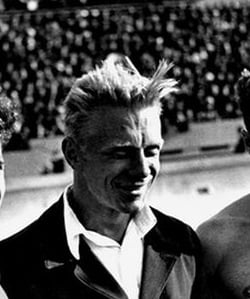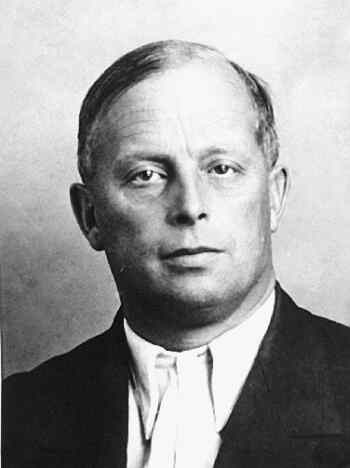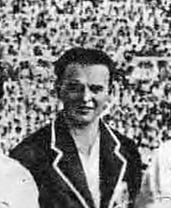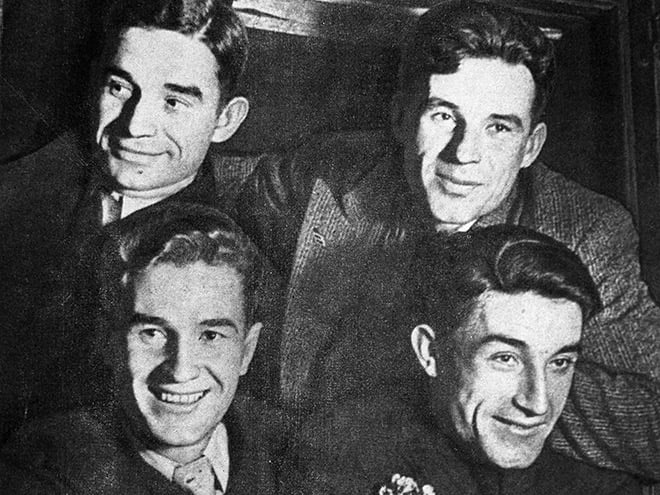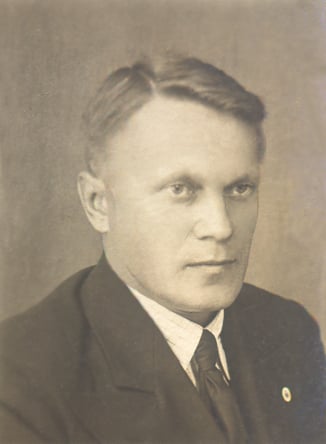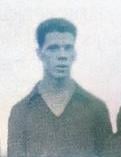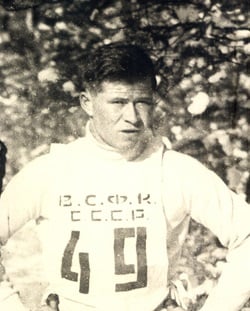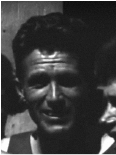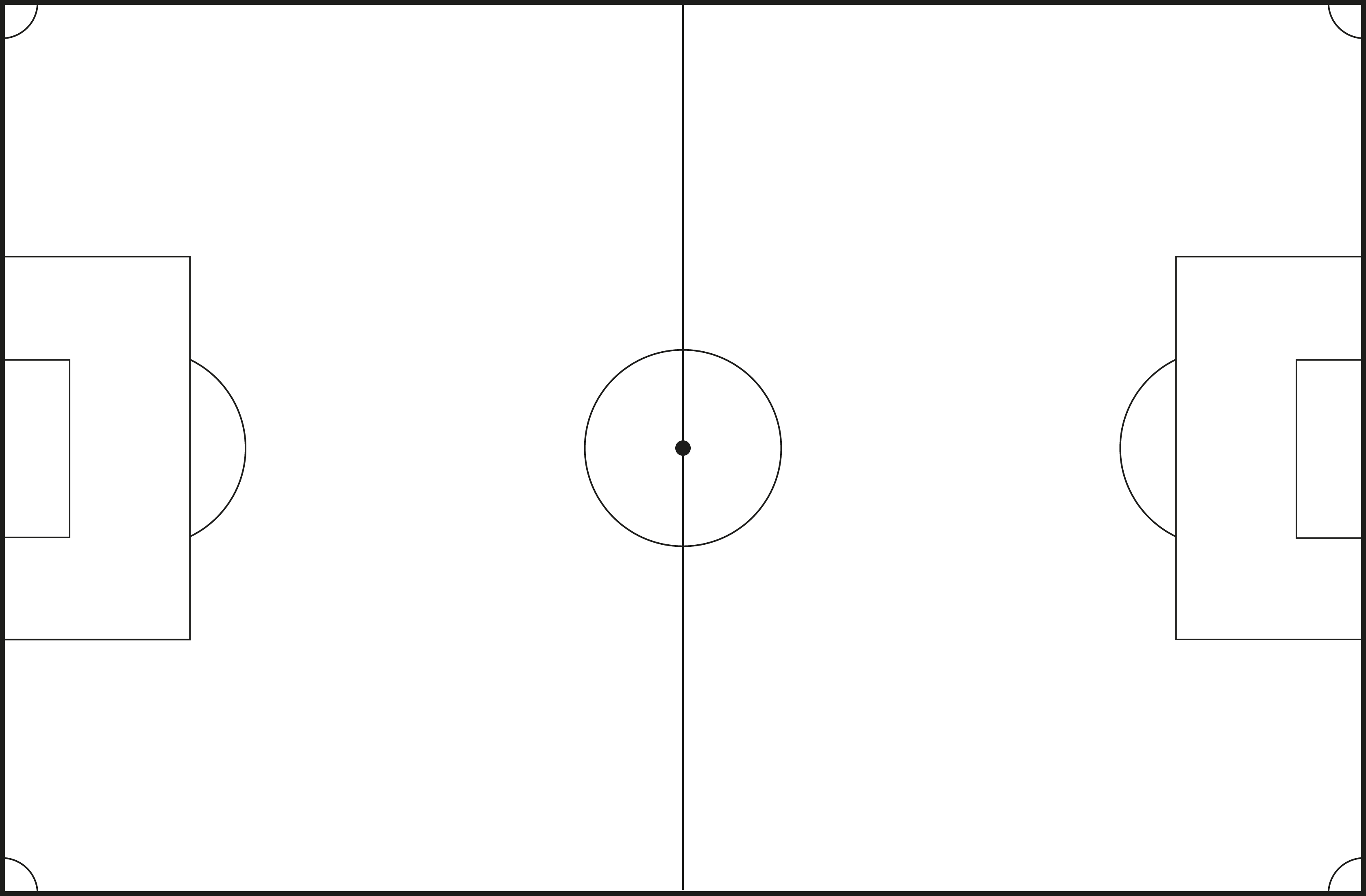Match broadcast
event Ribbon
Set up in 1935 Spartak was a voluntary sports society of a new type. Alliance between the Komsomol and Promkooperatsia (clerks’ trade union) formed a team without any formal connection with a large state structure.
This Moscow football team emerged in Krasnaya Presnya lanes, when a group of friends gathered it around four Starostin brothers. Changing its title and formal subordination, it survived 1920s and the first half of 1930s.
Now it was called Spartak – after German social democrats and internationalists from Karl Liebknecht and Rosa Luxemburg’s Spartak rather than in honor of the Ancient Roman gladiator.
Three historical games
In the next two years after the foundation of Spartak a few important games determined its history.
In January 1936 Spartak and Dinamo merged in one team before going to Paris where they were to play against Racing, the leader of the French football league. Muscovites lost 1:2, however, both the level of play and political resonance of the trip (the work on creation of an antifascist coalition in Europe) were recognized as successful. It became clear to sportsmen and politicians in the USSR that there was no abyss between “professional” Western and “amateurish” Soviet football. Less than half a year later after this game the USSR set up its own national football championship.
The second event – exhibition match in Red Square in the summer of 1936. The project suggested by the head of the Komsomol, Alexander Kosarev, received support and for the first time in the Soviet history changed a usually smooth flow of the sports parade. A huge felt field was laid out in the middle of Red Square, where Spartak first team played against Spartak reserves.
A third game became one of the central ones in Spartak club mythology. In July 1937 Spartak beat the Basque national team (6:2), which by that moment had not lost a single game in more than a dozen it played in the Soviet Union. Time passed, and political intrigues around the game, as well as extra players invited to play for Spartak from other teams to reinforce it were forgotten. Spartak won, having chosen to play against Spanish republicans following a new, “bourgeois” W-tactical scheme and proved one can not only fight with the outer world, but learn from it as well.
Thus, only a little more than two years after its foundation Spartak society turned out the most successful and popular in the Soviet Union. It could afford inviting the best trainers (in 1936 the football team was trained by Czech specialist Antonín Fivébr), the best athletes (Spartak lured away many stars from other societies), paying scholarships to its sportsmen (from trade union and Promkooperatsia funds). By the summer of 1937 the Starostins and Spartak were at the height of their fame and success. And that was the beginning of the Spartak case.
After the victory over the Basques Nikolay Starostin, official Spartak head at the time, gained a special privilege for his society from the organisers of the parade in Red Square — football players would ride a “Football boot” platform picturing the score of the game with Spanish republicans — 6:2. For security reasons two NKVD officers dressed as Spartak players were also seated on the platform.
Spartak goes to Workers’ Olympics in Antwerp as part of a big Soviet delegation. Participation in the tournament is another award for the victory in the game against the Basques and a demonstration of political opportunities of Alexander Kosarev, who managed to send abroad his own team instead of that year’s champion – Dinamo Moscow. The football team was to play in a cup playoff with amateur national teams of Denmark, France, Catalonia and Norway.
Secret NKVD order # 00447 is adopted by Political bureau. This order was the start of the most large-scale state repressive operation against its own citizens in the history of the USSR. The new informal rules stipulate the arrest of “ex-kulaks”, “criminals” and “other anti-Soviet elements”. In less than a year of mass terror more than 725 thousand people would be executed all over the USSR.
Spartak wins swift-passing Olympics, having beat 2:1 the team of Catalonia in the most difficult semi-final match and the national team of Norway in the finals 2:0.
The Pravda newspaper publishes an article on plunder in the Physical Culture Institute. The article mentions concrete sums in thousands of rubles and the Komsomol as one of those potentially accountable for the embezzlement.
Behind the scene
The main sports mass media of the country, the Red Sports newspaper publishes the article “Behind the scene”. Spartak leaders are charged with embezzlement, buyup of prominent sportsmen from other teams, corruption and a series of financial improprieties.
“On the surface everything seems to be alright: football players defeat the Basques, Spartak runners tear the finish ribbon, boxers knock their rivals out. But when you look deeper in the life of this society, the picture changes. Spartak players are not Spartak at all! The greater part of their players are contracted and have nothing to do with Promkooperatsia. They joined Spartak tempted by a “luxury life”: scholarships, apartments, cash bonuses. Thus, thanks to a widespread practice of luring away of sportsmen and embezzling of the funds the society creates its sports fame”.
“There is only one person reigning supreme in smoked stifling rooms of the Moscow council — N. Starostin”.
“Sham, clatter, humbug – this is the working style of the Moscow council of the society”.
“Generous leaders of the Moscow council enjoy a luxury life. Colossal sums are spent on country houses, construction of the Starostin brothers’ apartment who, by the way, live beyond their means. They buy expensive awards and presents, for themselves and “their folks”. Thousands of rubles are spent on “coaxing of useful people”, so to say. N. Starostin lost his sense of moderation. He gives golden watches to a few members of the sports delegation going to Antwerp, and in return for this “attention” they bring his suitcases stuffed with numerous purchases”.
Komsomolskaya pravda continues a public campaign with an article “Un-Soviet morals in the Spartak society”.
The list of charges is the same: “speculations”, “opportunism”, veiled professionalism (unlike other sports societies Spartak not always succeeded in finding sham jobs for their sportsmen, sometimes they did only sports), “luring” players from other teams.
The main accused is Nikolay Starostin. This time the media go beyond an accusatory intonation and conclude with a killing turn for 1937:
“A stagnant, rotten atmosphere of opportunism, bribe and looting was to a significant extent forced in society by people’s enemies who had wriggled their way to the All-Union Physical Culture Committee. They managed to have inflicted a lot of harm to the sports movement. To eliminate the consequences of the sabotage in the sports sphere sports societies, in particular Spartak, should undergo a decisive purge from bourgeois bohemians, dirty money makers putting their hands in a public purse and sabotaging a mass development of physical culture and sports”.
Silence on “Dinamo”
Spartak plays a championship match with Dinamo (Moscow). Spartak’s bus arrives in Petrovsky park in absolute silence: stadium staff does not meet the team at the dressing room and does not help with equipping. In the atmosphere of universal fear no one wants to be noticed near Spartak. Nikolay Starostin explains to his brother Andrey that they can’t lose the game – it would be seen as a demonstration of weakness, and a possible defeat will clear the way to future repressions against Spartak. An intense match ends in a draw — 0:0.
Kosarev defence
Throughout September Nikolay Starostin tried to gain a personal meeting with Kosarev. It most probably took place – informally (Andrey Starostin mentions it in his memoirs). However, under new circumstances even the head of the Komsomol is not sure in his own security and avoids open meetings with the Starostin brothers. Ivan Epifanovich Pavlov – chair of the Spartak society – plays an intermediary in these negotiations.
Having discussed everything with Kosarev, he reassures the brothers: they will be “covered” in terms of political charges, but they should try to contest financial ones.
Football, just like the whole world around it in the Soviet Union of the late 1930s, is the continuation of politics by other means.
Once the Starostins tried to turn the game into a professional sports, writing down the rules and protecting it from the outer influence of the state, and thus they themselves turned from footballers and organisers into politicians. now they are in need of Kosarev’s politial support – they await their own arrest every day
The Starostin brothers write several explanatory letters to the members of the Political Bureau — Kosarev, Chyubar, Molotov, as well as to Stalin. By fall the financial part of the charges against Spartak leaders had been recognized as unproved.
“This all does not correspond to the facts and is an obvious frame-up and exaggeration, which can be easily ascertained even in the course of a tenuous familiarization with the actual state of affairs and functioning of the Society”.
Victor Ryabokon, football referee and ex-head of the Lokomotiv football club, is arrested. His “connections with foreign countries” leaked out (during a trip to Paris he met his ex-fellow student, who had emigrated), he is also charged with participation in a counter-revolunationary plot under Nikolay Starostin’s guidance. Mikhail Leontievich Gubochkin was appointed investigator of his case.
NKVD officers arrest Ivan Grebenschikov – a well-known skier in 1920s and head of the track-and-field athletics and ski chair of Moscow Physical Culture Institute at the moment. In the arrest warrant he was named a “mastermind and active participant of the counter-revolutionary terrorist group consisting of instructors of Stalin Moscow Physical Culture Institute and masters of sports of the Spartak society”.
NKVD arrests Vassily Steblyov, coach of the track-and-field athletics school of the Spartak society. He worked part-time as a coach at the German embassy, and a few Track-and-field Athletics magazines in German were found at his place. His charges include “keeping fascist literature” and “counter-revolutionary agitation”. In his first testimonies Steblyov reminded the investigator that he had been “working for NKVD since 1933”.
On the night of the same day, 25 October 1937, Spartak skier Trofim Kadrileev was arrested. He was announced a conspirator against members of the government and was “caught” keeping guns.
Trofim Kadrileev gave the first confessionary evidence: “there are two fighting groups in Spartak”. Among the participants he named are Steblyov, Gvozdover, Puzhny. Nikolay Starostin heads both “wings”. Investigator of unit 4 of department 9 Yuda Lvovich Rabkin interrogates Kadrileev.
“Grebenschikov told me that football referees Ryabokon and Strepikheev were active participants of a counter-revolutionary organisation, and together with Nikolay Starostin they guided terrorist groups set up among Moscow footballers”.
An arrest and a search at 3, Malyi Kozikhinsky lane — Victor Prokofiev, ex-player for Pischevik and at that time the head of the Burevestnik Football and Hockey School and the husband of Klavdia Starostina, the sister of Nikolay, Alexander, Andrey and Pyotr, was detained. In the warrant Prokofiev is called a “terrorist”. The investigator of his case is ensign Alexander Berezkin, assistant chief of unit 9 of department 4 of NKVD.
The same night, on 27 October, football referee Vladimir Strepikheev, a close friend of the Starostin brothers, was arrested. Two months before the arrest he refereed the matches of Lokomotiv, Dinamo and Minsk national team with the Basques. Strepikheev’s case is also under the jurisdiction of ensign Berezkin (as are the cases of all main accused within the pending collective case).
Vassily Steblyov tells about the plans to overthrow Soviet authorities. During the parade on 1 May 1937 the plotters were supposed to “wriggle their way into the rows of the parade participants and throw a bomb at the Mausoleum to blow up the members of the government together with the Mausoleum”. According to another plan reported to the investigation the plotters were to shoot at Stalin from the GUM roof. The “project” was approved by the plotters, however, nothing happened at the parade. NKVD ensign Mikhail Leontievich Gubochkin conducts the interrogation (he also interrogated Victor Riabokon).
“Having heard me out, Starostin said: “you’re a happy man, you’re not stewing in your own juice, but we, though we travel abroad, what’s the point, they hold us there as if on leash. No, there’s no future for us in sports under the Soviet regime. There are guys with great potential in all kinds of sports, but Soviet conditions don’t give them a chance to get ahead. <...> Nikolay Petrovich Starostin is surrounded by a group of sportsmen opposed to the Party and Soviet authorities in their views”.
It followed from Vassily Steblyov’s testimony that a group of plotters regularly gathered at Nikolay Starostin’s place and discussed plans of a coup d’etat in the country. Like, for instance, in January 1937, when the meeting was “disguised as a game of preference”.
The issue of material evidence is separately discussed in Steblyov’s testimony. Where did all those “secret packages” he received from Starostin and German embassy go?
At the same time hundreds of people were arrested in Moscow on charges with connections with the German Embassy — political emigrants, German communists, ethnic Germans born in the USSR and people like Steblyov – who for some reasons visited this embassy at least once. Any contact – real or invented – guarantees conviction for “espionage” or “fascist sentiment”.
NKVD arrest Vassily Steblyov’s protege, a 23-year-old runner, national champion on a 1500 meters distance, Eliazar Gvozdover. He translated and told his friends fragments from the German magazine Track-and-Field Athletics. The arrest warrant runs that Gvozdover was a “member of a military terrorist group”. His case is also dealt with by unit 4, investigator Polyak.
Ivan Grebenschikov gives his first confessionary evidence. He calls himself one of the participants of the plot against members of the government and coach Vassily Steblyov – the person who “recruited” him. His investigator is Yuda Lvovich Rabkin, as in the case of Kadrileev.
“When we stayed in the street alone, he
went to see me to the tram and on our way he said that there were a lot of guns in the armory of the institute. <...> On 1 January 1937 Steblyov took me to the forest to watch the skiers on their distance, and there he told me that the center decided to appoint the commitment of the terrorist act against members of the government for 1 May 1937 during the parade in Red Square”.
Victor Ryabokon starts giving detailed confessionary evidence. During a trip abroad to Paris in 1935 he met his fellow-student Nikolay Alexeev who had emigrated to the West after the revolution. He “recruited” Ryabokon in his “organisation”. Among other football “plotters” were Nikolay Starostin and Spartak footballers of the beginning of 1930s – Pyotr Isakov and Stanislav Leuta.
“We can’t rely on inner forces. We need assistance from the outside. In this sense Germany is the most powerful country – the only progressive state openly calling for the fight against Communism all over the world <...> Starostin suggested killing the party and government leaders at the Dinamo Stadium during one of the sports competitions. According to Starostin, this was the most acceptable variant, because usually the leaders attended the stadium and he always knew about it beforehand from Kharchenko. It was decided to shoot at the moment when some of the chosen people would descend the stands and get in the car”.
Trofim Kadrileev and Vladimir Strepikheev are sentenced to execution by the Military Collegium of the Supreme Court. Both are executed on the same day.
Kadrileev and Strepikheev are the first sportsmen executed under the Spartak case. As practically all the other victims of this case they are buried at Kommunarka shooting range, on a small territory in the forest around a former country house of the NKVD head Genrikh Yagoda, among more than 6 thousand people executed in 1937-1938.
Grigory Puzhny, a coach of the Spartak track-and-field athletics school, member of the relay race team of the Spartak society is arrested. For many years he had been performing together with brothers Serafim and Georgy Znamensky, the main Soviet runners. Now the Znamensky brothers witness against him.
The Military Collegium considers the case of Eliazar Gvozdover. The session takes 15 minutes. Gvozdover is sentenced to capital punishment and executed the next day.
Leonid Geyek, head of the education and sports department of the Pischevik society, who had worked as an accountant in Spartak before, a close acquaintance of Grigory Puzhny, is arrested. He is also convicted as a “member of a criminal organisation of fascist-oriented sportsmen”.
Evgeny Arkhangelsky, a former football player and Andrey Starostin’s friend is arrested. Charges against him contribute a new line in the case – he allegedly collected the information on the preparation of “Voroshilov sharpshooters” who could be used for an assassination attempt on Stalin.
Victor Ryabokon is convicted and executed according to the sentence of the Military Collegium. In his final plea he asked to “keep him alive”.
NKVD arrests Serafim Krivonosov, a former footballer and at that time – head of a store of Spartak sports goods. His name had already been mentioned by other detainees among other participants of a joint “plot”.
Friends
Serafim Krivonosov is interrogated about the meetings of friends at Andrey Starostin’s place. He confirms that he often went there together with Evgeny Arkhangelsky and Vladimir Strepikheev, and repeatedly heard “anti-Soviet talks” there.
Victor Prokofiev is sentenced to capital punishment by the Military Collegium. Unlike other defendants in the case Prokofiev refuses to plead guilty. Under the sentence he is executed on the same day.
Serafim Krivonosov is executed. His final indictment includes charges with “the preparation of an attempt on Stalin at the Lokomotiv stadium” (Stalin himself, as is known, took no interest in sports and never attended football matches apart from the matches in Red Square).
Nikolay Starostin sends Kosarev a draft of a carnival travesty show for a physical culture parade in preparation. The script is called “Fascist motley crew against the worldwide peace” and represents a football national team consisting of USSR political opponents — with Trotsky in goal, Mussolini as a midfielder, “total f…” – Hitler, Gebbels, Gering as forwards, etc.. According to Nikolay, the script was written by “all the brothers”, and was apparently to stress their total political loyalty.
The script was handed to Molotov and then turned down with the following statement: “In my opinion, comrade Starostin’s project is unacceptable: why on earth would we scold the governments of almost all the countries in the world and fool around with the topic? It is not smart and harmful for the cause”.
A parade dedicated to the Komsomol 20th anniversary takes place in Red Square and at Dinamo Stadium. It is concluded by a sketch “If the war starts tomorrow” with the participation of sportsmen – shooters and gymnasts.
Vassily Steblyov is sentenced to death penalty by the Military Collegium of the Supreme Court and executed on the same day.
Another football season is finished, Spartak becomes champion of the USSR. In many ways this is a historical championship: for the first time 26 teams play in group A of the first division, every team plays 25 games. This is the first season with a “double” in the history of Spartak – the team won both the championship and the USSR Cup.
Nikolay Yezhov, head of NKVD, Alexander Kosarev’s friend and political associate, hands in his resignation. Soon he would be officially dismissed. The most troubled period of arrests and execution sentences later on called the Great Terror is finishing.
Lavrentiy Beria supersedes Yezhov as Commissar of Internal Affairs. The next day all operation orders and instructions concerning mass terrorist operations were cancelled; all investigative cases under which sentences had not yet been delivered were referred to court instances and the NKVD special council and reconsidered in accordance with the “norms of socialist legal order”.
Alexander Kosarev – the Komsomol head until then, a friend of the ex-Commissar of Internal Affairs Nikolay Yezhov, who had already been dismissed – is arrested. After Kosarev’s arrest Spartak and the Starostin brothers lose their main political patron. A manhunt for people of Yezhov’s circle, his associates starts.
Nikolay Starostin applies for party membership. Evidently, this is a precautionary measure, an attempt to protect oneself with the help of a party membership card at the moment of the next possible crisis. The same month Nikolay Starostin becomes a “candidate member of the The All-Union Communist Party of Bolsheviks”..
Puzhny, Geyek, Kabakov and Arkhangelsky are brought together to a court session under their case. All the four are surprised why the Starostin brothers are not mentioned in the indictment. Geyek tells that back in summer, during a transportation from Taganskaya prison to Butyrka he heard from one of the prisoners that the latter saw Andrey Starostin at a hockey match. Does it mean that none of the Starostin brothers is arrested? The accused decide to withdraw their testimony given during the preliminary investigation — since the Starostin are free, the case can derail.
Spartak plays against Stalinets Leningrad in the play-off of the USSR Cup, wins 3:1 and wins this tournament for the second year running.
It becomes known that the semi-final match of the Cup “Spartak (Moscow) – Dinamo (Tbilisi)” will be replayed, despite a recent play-off. During the next few days Nikolay Starostin tried to find out the reasons for such a strange decision, walking from instance to instance, where he is given to understand that this is the order from “above” and is not to be discussed.
In a series of testimonies at the end of September 1939 the accused tell about the connection between Alexander Kosarev and Nikolay Starostin. The investigators are interested in corruption, presents from trips abroad and financial matters of Spartak. It turns out that back in spring 1936 Nikolay Starostin presented Kosarev with a gun for his birthday at the Xth VLKSM congress with an engraving: “Good luck to Alexander Vasilievich. From Spartak members”.
In 1937-1938 these details would have caused a stir with the investigation, but now, when the case is derailing, NKVD does not get this story going.
In the next series of withdrawal of testimony one of the defendants of the case told that in fall 1937 the Starostin observed the investigation under the cases against Spartak members. The information was allegedly passed by Pyotr Riadnov, NKVD captain, a guy from Ezhov’s team, a typical investigator of the Great Terror era. In fall 1939 Riadnov was already dead: he was arrested together with other Ezhov’s associates in winter 1939, charged with “fascism”, beatings of accused during interrogations, abuse of power, and executed in July 1939.
Spartak and Dinamo (Tbilisi) replay the semi-final of the USSR Cup. Dinamo Stadium is full, this is one of the most memorable games in the history of the pre-war Soviet football. Despite the absence of a few key players (captain Andrey Starostin can’t play because of a broken arm), Spartak wins – 3:2. The semi-final is won after the play-off, Spartak keeps the cup.
Almost three years later, when Nikolay Starostin is arrested, investigator Anatoly Rassypinsky would remember about this match and ask a question: “Is it true that the match referee Nikolay Usov received a bribe from the Starostins – a pair of ladies’ shoes?”. “No, — Nikolay would answer — he bought them himself with a voucher”.
Military Prosecutor assistant Kurov suggests releasing Geyek, Puzhny and Arkhangelsky.
“Absurdity and nonsense about spying and terrorist activity of the accused, to believe their testimony, is so obvious that arouses no doubts even with the investigators conducting the case”.
New testimony of Georgy Znamensky, runner and NKVD informer on sports issues. Both Znamensky brothers have a many-years experience of writing reports and denouncements to the state security.
“I remember in spring 1933, at the “Young pioneers” stadium, during a break in sports training, Geyek said with a laugh in my presence and in presence of many others sportsmen, whose names I don’t know, in regard to a loan subscription under way then: “voluntary compulsory”. <...> It should be said that in my first testimony I went too far, may be I am to blame myself, but the atmosphere of the investigation influenced me <...> Nevertheless Leonid Geyek did read the book “Mein Kampf”.
The court judges to release Geyek, Arkhangelsky, Kabakov and Puzhny. They are all released from prison, this is a part of “Beria amnesty” – people who had not yet been sentenced under Yezhov’s rule, got a chance for reconsideration of their cases.
Under the guidance of Pyotr Popov, husband of Vera Starostina, Spartak sets a permanent record of Soviet championships – wins a “double” for the second year running, both the championship and the Cup.
One of the investigators of the Spartak case, Meshkov, is brought to responsibility for the violation of investigation rules – for not including some details of the investigation in the protocol and for careless copying of the evidence.Upon inspection all charges were withdrawn.
The Starostins case
Two years after the cases connected with the arrests of Spartak players in 1937-1938 were closed NKVD arrests three Starostin brothers – Nikolay, Andrey and Pyotr. They are charged with financial improprieties, “defeatist moods” (anticipation of German troops) and “eulogy to bourgeois sports”. The fourth brother, Alexander, will be arrested a bit later, in fall.
